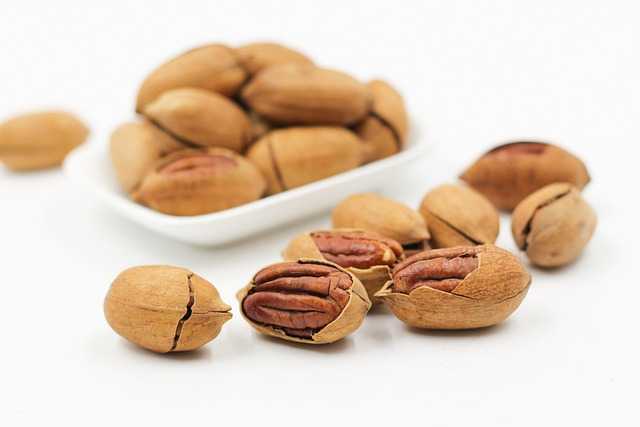What Is Lescohid Herbicide?
Lescohid is a postemergent herbicide aimed at controlling broadleaf and grassy weeds in turfgrass. It’s widely used for commercial lawns, golf courses, and residential properties. The active ingredient (typically ammonium salt of imazapic or similar) targets weeds without damaging most coolseason and warmseason grasses—if applied correctly.
It’s systemic, which means it’s absorbed into the plant and kills from within, rather than just burning the surface. You apply it when weeds are actively growing; it’s not meant for preseason weed prevention.
Why Timing and Application Matter
Even the best herbicide can flop with bad timing. Lescohid works best when applied during active weed growth. Spray too early or too late, and you’ll be disappointed. Turfgrass type also plays a huge role. For example, Kentucky bluegrass and Bermuda grass both tolerate Lescohid well, but it might stress or scorch more sensitive varieties.
Another key variable is the weather. Apply during heat waves or before heavy rain, and the results drop fast. So don’t expect magic unless you’re watching conditions closely.
Strengths of Lescohid
Lescohid has some legitimate advantages:
Selective target range: It hits over 100 weed species but usually spares your turf. Absorbs through foliage: Effective systemic control means you stop weed growth at the root. Relatively low toxicity: It’s safer than many alternatives for both pets and the environment when used correctly.
It’s especially good against crabgrass, clover, goosegrass, violets, and dandelions with repeated use.
What Grass Types Handle It Well?
Lescohid is generally safe on:
Bluegrass Fescue Bermuda Grass Perennial Ryegrass Zoysia
If your lawn includes a mix of these grasses, odds are that Lescohid can get the job done without collateral damage. But always test a small area before full application.
The Weak Spots
For all its strengths, Lescohid has limits. First, it’s not a quick fix. It may take days to weeks to see visible results. Weeds wilt slowly. This can be frustrating if you’re used to fasteracting chemicals.
Also, its effectiveness depends heavily on precise application. A little too much, or poor mixing, can cause turf discoloration or injury. Not permanent, but still unattractive.
And while Lescohid handles many weeds, it won’t do much against preemergent threats or hardier invaders like nutsedge or creeping Charlie.
User Experience: What Homeowners Say
Among DIY homeowners and pros alike, Lescohid has a rep for being reliable but not foolproof. One common theme: it requires commitment. This isn’t a onespray miracle. Several users report success after a second application and proper mowing practices.
Another frequent point is tankmixing. Many mix it with other herbicides or surfactants (liquid agents that help the herbicide stick better to leaves) to improve coverage and efficiency.
Is Lescohid Herbicide The Best For Grass?
So here comes the repeat question: is lescohid herbicide the best for grass? That depends on what “best” means to you.
If you’re looking for wide weed control with minimal turf risk, Lescohid is a solid bet. Its selectivity and low residual toxicity make it lawnfriendly. But if you’re after quick knockout power or allseason coverage, it might fall short. You might need a combo of pre and postemergent products to keep lawns pristine yearround.
As a standalone solution, Lescohid is better viewed as a weed manager, not a weed eliminator. That distinction matters when managing expectations (and your lawn).
Alternatives Worth Considering
Depending on your lawn’s needs, these are solid alternatives:
Tenacity Herbicide (mesotrionebased): Works pre and postemergent. Great control, especially for new lawns. Quinclorac 75 DF: A toptier choice for persistent crabgrass. 2,4D or Trimec blends: These are fasteracting and good for broadleaf weeds, with a longer track record in residential lawns.
What you pick depends on soil conditions, grass type, and your tolerance for repeat treatments.
Pro Tips For Best Results
If you go with Lescohid:
- Use a surfactant: It improves leaf absorption and action.
- Spray during active weed growth (avoid drought or dormant phases).
- Avoid mowing two days before and after application. This allows the herbicide more leaf area to absorb.
- Spot treat when possible: Less chemical waste, more control.
- Apply early morning or late afternoon: This limits rapid evaporation and sunstressing the grass.
Final Verdict
Lescohid is a disciplined tool in your lawn care arsenal, not a cureall shortcut. So—is lescohid herbicide the best for grass? If you’re managing a mixedweeds lawn with tolerant turf types and you’re up for precision application, yes, it’s a great choice. But it won’t carry the whole fight solo. Combine smart timing, good mowing habits, and possibly a preemergent partner product for the best longterm results.
It’s not the flashiest herbicide out there, but for those playing the long game, Lescohid is worth a serious look.

 I'm Daniel Leverette, and I’m excited to be part of the incredible team at Cycle Smooth Ride Long. Cycling has always been a passion of mine, and now, I get to share that passion with you by bringing expert insights, reviews, and tips to help you elevate your ride.
At Cycle Smooth Ride Long, we believe that every cyclist deserves the best experience, whether you’re hitting the pavement for a casual ride or gearing up for an intense training session. My goal is to ensure that you have the knowledge and tools you need to enjoy every mile, from choosing the right gear to optimizing your nutrition and fitness.
I'm Daniel Leverette, and I’m excited to be part of the incredible team at Cycle Smooth Ride Long. Cycling has always been a passion of mine, and now, I get to share that passion with you by bringing expert insights, reviews, and tips to help you elevate your ride.
At Cycle Smooth Ride Long, we believe that every cyclist deserves the best experience, whether you’re hitting the pavement for a casual ride or gearing up for an intense training session. My goal is to ensure that you have the knowledge and tools you need to enjoy every mile, from choosing the right gear to optimizing your nutrition and fitness.
